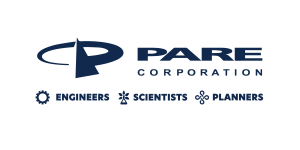Resource
Concrete Assessment using Non-Destructive Testing: New Technology
ABSTRACT ONLY - Cost effective design/repair strategies continue to be a top priority for owners of our nation’s aging infrastructure. Dams are at the forefront of this concern, and according to frequent conditional assessments, many are in critical need of repairs. This presentation will examine cutting-edge technologies that can assist engineers in evaluating dams to confidently/efficiently determine structural component integrity and quantify deterioration. Various nondestructive test methods will be covered. Ground penetrating radar (GPR) (ASTM D6753) is an electromagnetic scanning investigation method. Reinforced concrete members can be investigated and flaws determined with a high frequency GPR antenna. The stability of compacted soil embankments can be evaluated with a low frequency GPR antenna. The reflected GPR signal looks “inside the concrete to qualify the rebar spacing, cover depth and moisture. In soil, GPR can identify water infiltration and seepage paths which could lead to a failure. A Sonic/ultrasonic system acquires Impact Echo data (ASTM C1383-15) and Pulse Velocity data (ASTM C597) simultaneously. Impact echo data measures the concrete thickness (dimensions) and will determine if delamination between the rebar and concrete exists. Pulse velocity data is used to determine the average compressional and shear wave velocity in the concrete which can be equated to compressive strengths. The concrete dimensions and in-situ strength are calculated by measuring the energy wave’s amplitude/frequency and velocity through the concrete. An energy source and adjacent sensors are commonly used to collect surface measurements for analysis and interpretation. Traditional surface testing, with the energy source and receivers adjacent to each other, yields internal strength information to a depth of roughly 10 . Through testing is an innovative new approach that separates the source from the receiver and can provide internal assessments of thicker concrete members. In the case of dams, where thick sections of concrete exceed 10’, such “through testing” allows engineers to see inside the supporting buttresses, massive slabs, and the dam face itself. However, access to both sides of the concrete is required and these costs need to be considered. New technology/approaches have proven successful in making electrical energy sources and sensors/receivers waterproof and deploying them autonomously to collect data. This is accomplished by mounting them to an underwater remote operated vehicle (ROV), or customized climbing robots for vertical and inverted surfaces. This can eliminate the need for scaffolding erection, complex rope access or man-lift assistance.
































